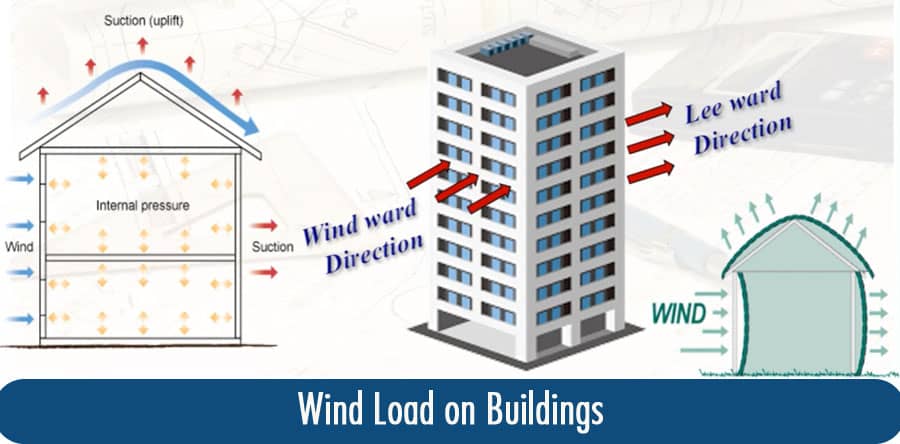Wind Load on Buildings | Roofs | Windows | Walls

Wind load is a force that is exerted on a building by the wind. It is caused by the difference in air pressure between the windward and leeward sides of the building. The windward side is the side of the building that faces the wind, and the leeward side is the side of the building that is away from the wind.
Wind load can cause significant damage to buildings, and in some cases, it can even cause buildings to collapse. The amount of wind load that a building experiences depends on a number of factors, including the wind speed, the height of the building, the shape of the building, and the materials used in construction.
Examples of Wind Load
There are many examples of wind load on buildings. Some of the most common examples include:
- Damage to roofs: Wind can cause roofs to collapse, tear off, or be blown away.
- Damage to windows: Wind can cause windows to shatter, crack, or be blown out.
- Damage to walls: Wind can cause walls to crack, crumble, or be blown down.
- Damage to foundations: Wind can cause foundations to shift, crack, or collapse.
Preventing Wind Damage
There are a number of things that can be done to prevent wind damage to buildings. Some of the most common methods include:
- Using strong materials: Buildings should be made of strong materials, such as concrete, masonry, or steel.
- Designing buildings for wind load: Buildings should be designed to withstand the wind load that is expected in the area where they are located.
- Installing wind bracing: Wind bracing is a system of supports that is used to strengthen a building against wind load.
- Maintaining buildings: Buildings should be regularly inspected and maintained to ensure that they are in good condition and can withstand wind load.
Conclusion
Wind load is a serious force that can cause significant damage to buildings. By following the tips in this article, you can help to prevent wind damage to your building and keep your family safe.
Here are some additional tips for preventing wind damage to buildings:
- Plant trees and shrubs around the building: Trees and shrubs can help to break up the wind and reduce the wind load on the building.
- Remove loose objects from the roof: Loose objects, such as Christmas decorations, can be blown away by the wind and cause damage to the roof.
- Secure doors and windows: Doors and windows should be properly secured to prevent them from being blown open by the wind.
- Have a plan in place in case of a windstorm: In the event of a windstorm, it is important to have a plan in place to evacuate the building if necessary.
